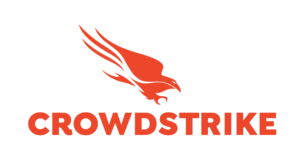Sponsored Post: Nick Hayes, CrowdStrike Senior Product Marketing Manager.
We’ve all seen the devastating impact adversaries and ransomware attacks can have on organizations—taking down critical systems and operations, holding strategic data and intellectual property (IP) hostage, and straining relationships with key partners, investors and customers. These attacks are becoming increasingly common along with the repercussions: the CrowdStrike 2022 Global Threat Report reported an 82% increase in ransomware-related data leaks in 2021. As of Dec. 31, 2021, there were 2,686 such attacks—a sharp jump from 1,474 the previous year.
The financial damage of a ransom payment is often severe. And once you factor in the less tangible, hidden costs such as lost customer trust and damaged partnerships, this form of cyberattack can be debilitating and take months, if not years, for many organizations to recover.
If ransomware is deployed, victims should be aware of the potential consequences they may face—including all the related costs. Proper preparation can ensure minimal impact on customers and help victims respond more quickly to an attack. Here, we discuss the many costs ransomware victims may face and why they’re essential to know.
Threat Actors Know What You’re Worth. Do You?
Threat actors are financially savvy and adjust their ransom demands accordingly. Demands now typically start in the low millions of dollars, and scale upward based on the size of the target organization, and the scope and severity of their attack. In fact, CrowdStrike’s latest annual Global Security Attitude Survey revealed the average ransom payment is now upward of $1.79 million USD—meaning attackers may have had far higher demands before the victim agreed to a lower payment. Some threat actors are far more bullish, with some attackers’ ransomware demands reaching $100 million.
While it’s easy to write off these astronomical sums as threat actor pipedreams, the true costs associated with ransomware are often far higher than the negotiated payment alone. The hidden costs of a ransomware attack can extend beyond the initial downtime and recovery to include brand and reputation damage, lost intellectual property, hampered competitive advantages and other costs associated with conducting business post-attack.
It is important to note that many experts advise not to pay ransom because it may incent attackers to target the same victim again, possibly with higher payment demands. It’s also important to note a ransom payment doesn’t guarantee or necessarily accelerate the data recovery process.
Breaking Down the Hidden Costs of Ransomware
Putting aside the ransom demand itself, ransomware attacks come with a host of monetary costs that may not be immediately apparent:
- Hiring a third-party security firm: An outside security firm can look at the security protocols that were in place at the organization and suggest changes to better prevent future attacks from happening.
- Cost of hours spent remediating the attack: Retrieving any data that was compromised in the attack is time consuming, and an organization has to divert resources to the process that could have been used elsewhere.
- Hiring crisis communications professionals: Depending on which data was compromised in the attack, a crisis communications firm might be necessary to help an organization inform the public, as well as customers, of the incident.
- Insurance premium increase: As cyberattacks have increased, cyber insurance companies have raised their premiums. While organizations should consider insurance protection, these policies come with a growing cost.
- Higher premiums and interest rates to raise capital: Venture Capital firms may assume more of a risk if an organization has been hit with ransomware in the past.
- Legal and regulatory fines: If an attacker publishes compromised data, the victim organization may be at fault for violating privacy regulations, depending on the data affected.
Other costs to an organization are harder to measure, but still impose a major burden. These non-monetary costs can do major damage in the aftermath of a ransomware attack:
- Lost customer trust: Customer data leaks destroy faith in an organization, which takes years to build. This trust can sometimes never be fully restored causing organizations to lose existing customers and have a harder time acquiring new ones.
- Damaged partner relationships: Partners’ trust in an organization and its security can also be damaged when confidential information is leaked through a ransomware attack.
- Weakened strategic and competitive advantages: Attackers who target IP can have devastating effects on an organization. IP could be the differentiation between the organization and others in the sector, and without that the company could suffer long-term damage.
- Damaged brand and reputation: Consumers may distrust the brand after an attack and perceive it as an unsafe option. This rapport is not easy to build back up and can cost the organization in the long run.
Include Hidden Costs in Your ROI and Risk Analyses
This rise in ransomware activity means organizations must be aware of the potential costs related to these attacks, especially when considering how much to invest in cybersecurity and planning their incident response strategies. Organizations often find out too late the effects of a ransomware attack, including the financial burden of recovery. When the Health Service Executive of Ireland fell victim to a ransomware attack in 2021, the costs of recovery were estimated to exceed $100 million.
Calculating the total cost of a ransomware attack looks different for every business and requires looking at every way an incident may affect your organization. A risk analysis will help identify valuable assets, the threats your organization faces and potential losses those threats may cause. Other than damage to assets and data, costs may include help from external security firms or crisis communications professionals, increased insurance premiums or hours of downtime. Some costs related to an attack are harder to assign a monetary value; losses in customer trust, employees’ productivity and competitive advantages are a few examples.
Use the Same ROI Principles to Build Your Cybersecurity Business Case
Ransomware attacks leave lasting financial effects on an organization. Investing in the right security technology can help save you from the astronomical prices of breach recovery.
For example, consider this study examining the ROI of CrowdStrike’s Falcon Complete. It’s estimated a composite customer could generate cumulative savings with a net present value of $5.81 million USD over three years, representing an estimated 403% ROI. The MDR service adds the capacity of several full-time security operations center (SOC) analysts and includes a Breach Prevention Warranty, which covers breach response expenses if there is a security incident within the environment protected by Falcon Complete.
Organizations must be informed of all the potential costs and long-term effects ransomware can have. Understanding these costs is critical when formulating an incident response plan and when investing in security protection. The lasting effects on reputation and other costs associated with ransomware mean organizations need to carefully invest to mitigate the risk of a possible attack.


